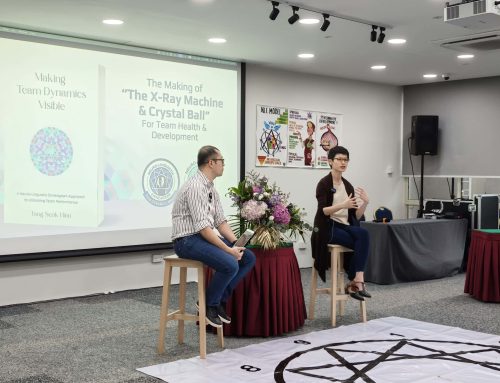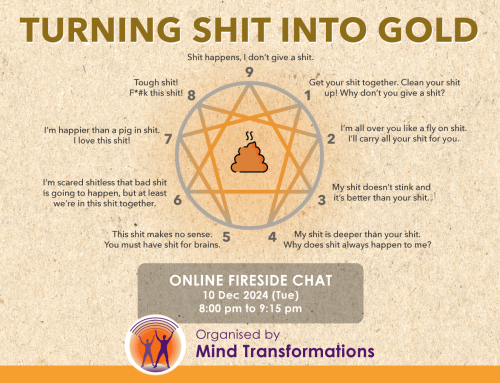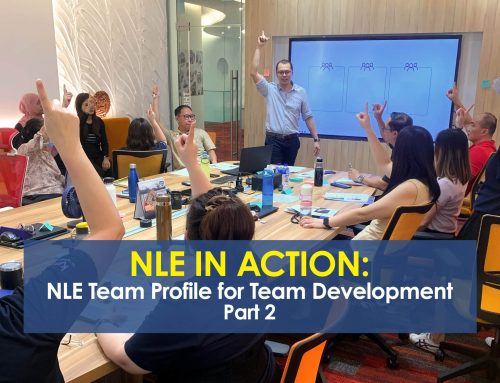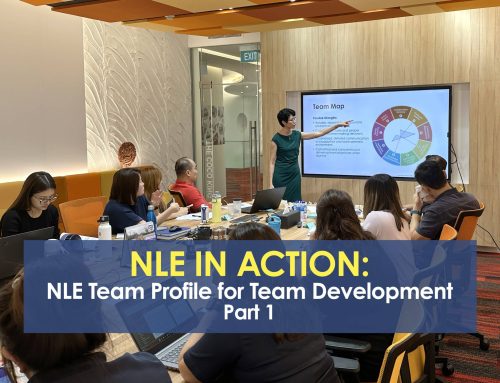By Tan Li-Anne
When Reflexes Do Not Work
Charlie is a very active 6 years old and has trouble reading. He gets easily upset when he does not get his way. He rushes through what he needs to do but cannot slow down to do it correctly. When teachers or parents gently try to show him another way to do something, he refuses to be helped.
Jane, 11-year-old primary school girl excels in languages and is in a gifted programme, but lags behind in physical education. She trips while running and is not physically confident. She has failed in many sections of her physical fitness test.
JY has been diagnosed with Autistic Spectrum Disorder. This 7-year-old has learnt to communicate better with speech therapy, but dribbles and has trouble pronouncing clearly. He can write simple words and holds his pencil awkwardly. He loves his favourite toy and will hold onto it for hours. He may even visit people and hold on to their things and will not let it go. Sometimes he throws tantrums and cannot be reasoned with.
Mei Mei goes to a kiddy gym and is good at tumbles and turns. She is 6 and takes time to warm up to strangers. She gets upset easily when attending a new class, or going to new places. She likes to have her mother within her aight all the time, especially if she has to try something new.
What Are Infant Reflexes?
Reflexes are automatic involuntary Movements that keeps us to develop and learn. We have seen doctors tap patients on the knee, which reflexively spring up. This is to check the reflex action of the lower leg. In infants, we can observe other reflexes: if you gently rub the centre of baby’s palm, then her finger will curl inward. This is called the Palmer reflex. Make a sudden sound or movement, and a baby will widen its eyes, tilt the head back, and fling out arms and legs. This is the Startle or Moro reflex. Gently use a finger to stroke from the lower back up one side of the spine and the baby will wriggle – the Spinal Galant reflex.
Reflexes for Optimal Living
These and many other reflexes govern various functions:
Bodily functions like eating, sucking, swallowing, secreting saliva; Protection like rolling and head lifting;
Posture and movement of the body in space and maintaining balance, etc.
These reflexes correspond with developments in the brain and nervous system and grow, earlier reflexes develop and grow into more mature reflexes. However, some children and adults miss out on certain parts of their developmental blueprint. This prevents them from developing the right reflex movements. It can happen through stressful pregnancies and births, environmental stresses and traumas and even, over and under-stimulation.
Retained Reflexes
DSM-IV, the psychologists and psychiatrist’s diagnostic bible, lists reflex developmental delays as one of the symptoms of autism. Children with ADD/ADHD (Attention Deficit Syndrome/ Attention Deficit Hyperactive Syndrome) and autism retain their infant reflexes till an older age. Many of them retain their Moro, Spinal Galant and other reflexes. A child that scares easily in new situations and acts clingy with parents might have a retained “fear Paralysis Reflex”. These children can be highly sensitive, to touch or sound. They may complain that people are hurting them when someone is actually just light brushing against them.
As a child or adult that hates reading or is slow to read, or finds it hard to retain information through reading might have missed out on some stages in development that support eye motor control or in head-lifting or balance reflexes. This makes them over and under-sensitive and so vulnerable to sights, sounds and movement in the modern environment. They have difficulties filtering certain stimulus and may respond aggressively out of frustration. Overstimulation can also leave them over-focused on a particular task. this can sometimes be a defence mechanism to ‘environmental sensory overload’. Such children are shy or wary of new experiences, learnings and strangers.
Reflexes Integration
Knowledge of reflexes has existed for decades but methods to help develop reflexes were less known until recently. Reflexes integration helps to correct lack of or wrong reflexes in children. It helps in their motor development, emotional regulation, and development of reasoning ability and other skills. Reflex maturity provides some form of resilience and confidence in dealing with those situations. Much work has been done on reflex integration in countries like Sweden, eastern Europe, Australia and U.K. Whether a child has special needs or is doing well in most areas of his or her life, he or she benefited from such education, that works with delayed infant reflexes through educational or developmental kinesiology. the trainer is also known as a Brain Gym instructor. Working with reflexes can improve motor skills, the senses of balance, sight, smell, hearing, touch, muscle memory. It helps the body yo work more optimally by better processing of sensory information including emotions. This also helps to improve the ability to communicate. Integrating the reflexes is a non-invasive drug-free approach for dealing with autism and other challenges such as ADD/ADHD. When integrating the reflexes, the Brain Gym Instructor or Educational kinesiologist supports and retains the child or adult in the missing reflex movements that are part of their developmental blueprint (development appropriate to their age) through movement, games and sensory activities. Doing so wires up the brain to perform and process various tasks more easily. It also supports the nervous system to handle learning and life situations more optimally. Often, they enjoy living, learning and relating.
Article was published in Complementary Therapy Magazine Issue 3.
About Li-Anne
Tan Li-Anne has been an instructor and Practitioner of Brain Gym for the past 4 years. She runs her own practice, Nature’s Intelligence Kinesiology, where she sees many children with autism and ADD/ADHD, working with their reflexes through Brain Gym, Musgatova Method and rhythmic Movement Therapy.
www.naturesintelligence.blogspot.com
About Mind Transformations’ NLP Community
At Mind Transformations Pte Ltd, we have been very privileged to meet many people from all walks of life, including many therapists, who have learnt Neuro-Linguistic Programming (NLP) to improve their lives and the lives of others. We have seen our NLP Community grow since 1997, where we have many specialists in different fields who are helping others as their career or on a voluntary basis.
Besides Li-Anne, here are some other Mind Transformations NLP graduates you could contact to help your child, especially if he/she has special needs.
Angela Lim, founder of The Balancing Act
https://thebalancingactsg.com/
Hasnah A. R., founder of Positive Focus Pte Ltd
Nurturing positive habits that last a lifetime through child development programmes for the child’s mind, body, behaviour and emotional quotient; based on NLP, Music & Movement, and Yoga.
Dr. Alefiya Nomanbhoy, Psycho-Educational Consultant, founder of Positive Links
Email: positivelinks@gmail.com





